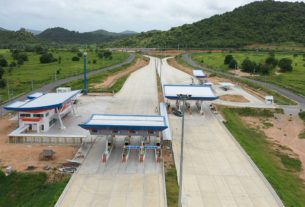The Airports of Thailand Plc (AoT) board will select one of five construction companies vying for the 5-billion-baht contract including Italian-Thai Development Plc and Sino-Thai Engineering & Construction Plc.
The contract award will signal the start of construction, which AoT is trying to reduce to 30 months from 36 months.
The accelerated schedule is due to the pressure from double-digit growth in passenger traffic through Thailand’s second-busiest airport, senior AoT executives told the Bangkok Post yesterday.
The 5.7-billion-baht expansion will entail a new passenger terminal capable of handling 6 million passengers a year, 10 more aircraft aprons from the present 15 and a five-storey car park for 1,000 vehicles.
When finished, the overall airport will process 12.5 million passengers a year, the expected capacity at the time of completion.
The expansion has been eagerly awaited by businesses and communities on the southern resort island for whom airport congestion has become a way of life.
Passenger traffic through Phuket airport soared by 20% last year to 8.4 million, straining its capacity of 6.5 million.
As well, AoT conservatively estimates this year’s passenger volume at close to 10 million, rising by 15-18% a year after that.
There has been growing concern that the airport’s capacity despite its expansion will likely still lag behind demand as Phuket’s global popularity as an exotic destination grows.
Phuket has seen a notable increase in tourist traffic from Russia and China, partly at the expense of their normal preferred Thai destination of Pattaya.
As well, Phuket airport has also witnessed a spike in passenger numbers from India.
But senior executives speaking on condition of anonymity said AoT will not be in position to cope with rising passenger traffic for at least 18 months after the start of construction, when some facilities start to become available.
With its distinctive wave-like roof design, the new passenger terminal will be used for international traffic, while the existing terminal will be for domestic flights.
No subsequent phases are planned due to restrictions on land availability.


